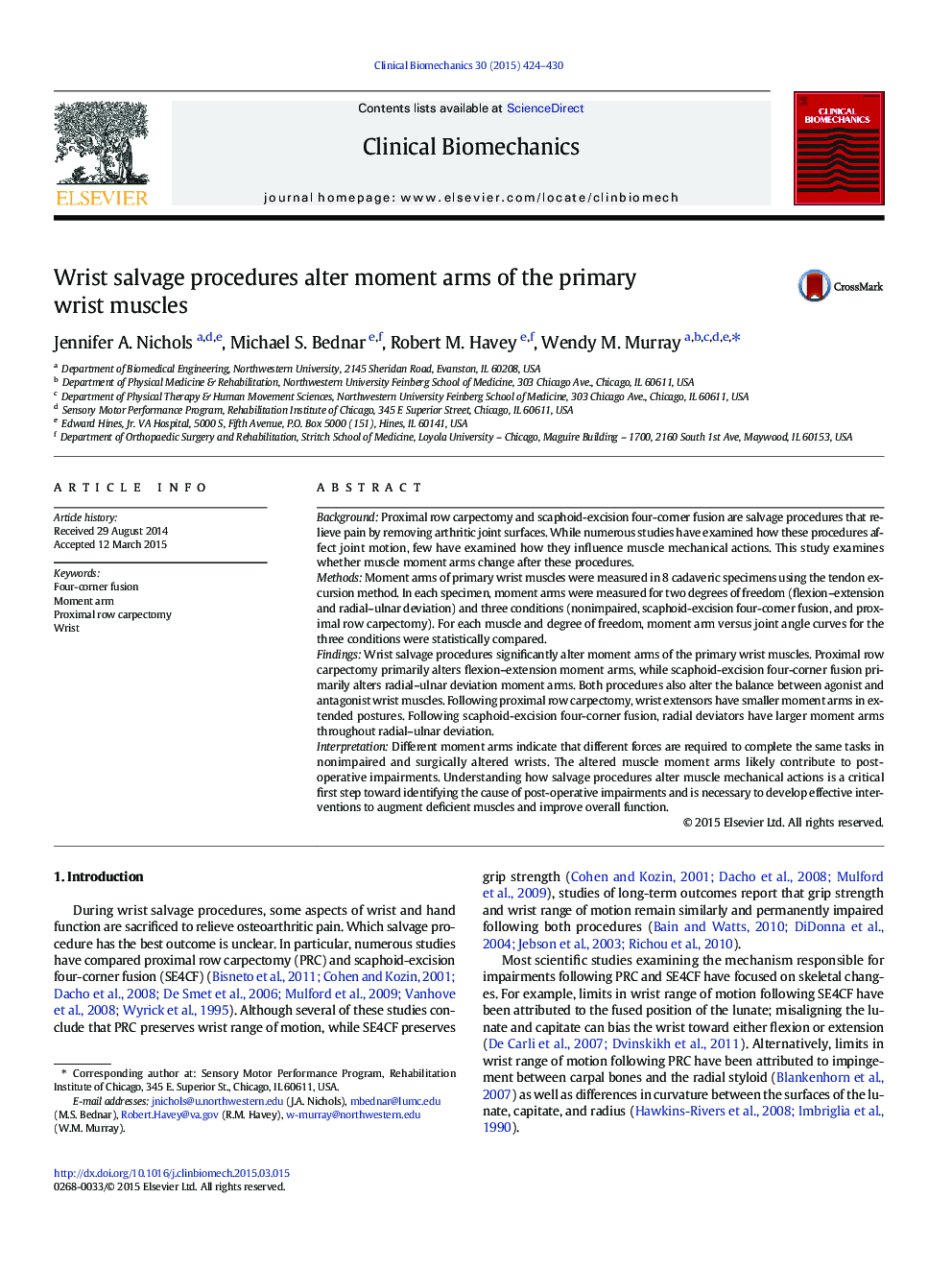| Article ID | Journal | Published Year | Pages | File Type |
|---|---|---|---|---|
| 6204787 | Clinical Biomechanics | 2015 | 7 Pages |
â¢We measure moment arms of the five primary wrist muscles for three conditions.â¢We compare nonimpaired, proximal row carpectomy, scaphoid-excision 4-corner fusion.â¢Proximal row carpectomy primarily alters flexion-extension moment arms.â¢Scaphoid-excision four-corner fusion primarily alters deviation moment arms.â¢Assessments to discriminate wrist strength among these conditions are needed.
BackgroundProximal row carpectomy and scaphoid-excision four-corner fusion are salvage procedures that relieve pain by removing arthritic joint surfaces. While numerous studies have examined how these procedures affect joint motion, few have examined how they influence muscle mechanical actions. This study examines whether muscle moment arms change after these procedures.MethodsMoment arms of primary wrist muscles were measured in 8 cadaveric specimens using the tendon excursion method. In each specimen, moment arms were measured for two degrees of freedom (flexion-extension and radial-ulnar deviation) and three conditions (nonimpaired, scaphoid-excision four-corner fusion, and proximal row carpectomy). For each muscle and degree of freedom, moment arm versus joint angle curves for the three conditions were statistically compared.FindingsWrist salvage procedures significantly alter moment arms of the primary wrist muscles. Proximal row carpectomy primarily alters flexion-extension moment arms, while scaphoid-excision four-corner fusion primarily alters radial-ulnar deviation moment arms. Both procedures also alter the balance between agonist and antagonist wrist muscles. Following proximal row carpectomy, wrist extensors have smaller moment arms in extended postures. Following scaphoid-excision four-corner fusion, radial deviators have larger moment arms throughout radial-ulnar deviation.InterpretationDifferent moment arms indicate that different forces are required to complete the same tasks in nonimpaired and surgically altered wrists. The altered muscle moment arms likely contribute to post-operative impairments. Understanding how salvage procedures alter muscle mechanical actions is a critical first step toward identifying the cause of post-operative impairments and is necessary to develop effective interventions to augment deficient muscles and improve overall function.
